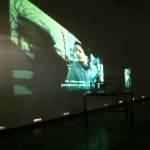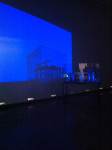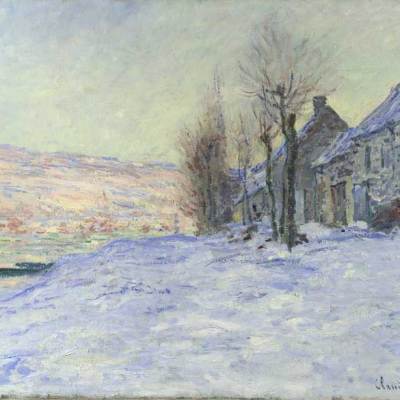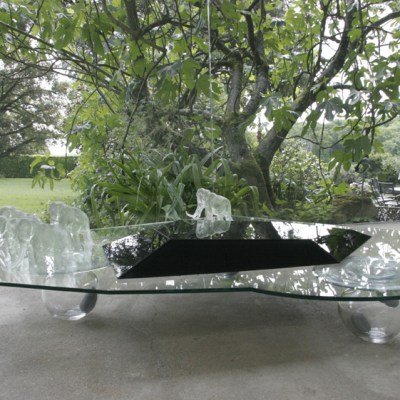The 14th edition of the International Architecture Exhibition is now open, and so begins another major testing period for how architecture can present itself and its concerns in an exhibition format.
Architecture is, after all, tough to exhibit, and more often than not appears in exhibitions only through the medium of its representations – flat two-dimensional photographs, drawings, and scale models, which communicate aspects of architecture, but rarely allow visitors to experience its powerfully spatial, textured quality. That is not to say a 1:1 scale presence is essential. There are other ways of using the craft of exhibition making to tell engaging stories about architecture, and it is interesting to seek out what the Architecture Biennale can offer on this level, particularly as it is through the medium of its communication that such a major exhibition can succeed to truly engage – and not just its own professional audiences, but also a broader public.
There is no doubt that this year’s research-based exhibition is rich in content. However, the sheer volume of information is a lot to get your head around, particularly as one visits exhibits after exhibit, as part of a two-day marathon. The Giardini Pavilions present an additional challenge, mounting displays in buildings that embody very loaded stories of design and political ambition themselves, and compete for attention with their exhibits.
Committed to presenting archival information from their research, a great number of the national exhibits this year fall into the ‘exhibition as a book on the walls’ trap, offering their visitors no more than a densely packed hang of mounted photographs. And yet there are some standout displays that really make a difference in their presentation. Highlights below…
Click here for an introduction to the 14th International Architecture Exhibition
Bungalow Germania, 14th International Architecture Exhibition. Courtesy la Biennale di Venezia. Photo: Andrea Avezzù

German Pavilion
This year’s German Pavilion is a striking play on a building within a building. A 1:1 scale (partial) replica of the German Chancellor’s former official residence in Bonn is literally ‘cross-cut’ into the physical space of the Pavilion itself. Resembling a cool mid century modern bungalow from the Hollywood hills, complete with wood panelling, a fireplace and glass curtain walls, the residence by architect Sep Ruf remains a powerful symbol of modern architecture’s involvement in the cultural politics of the Cold War and a nation’s image-making. The Bungalow’s design sits in stark contrast to the cold white walls of the Pavilion, famously remodelled in the sprit of the German Reich in 1938. The exhibition offers a nuanced commentary on the place of such ‘political’ buildings in German history, here strategically juxtaposed in order to be read comparatively. Without any extra text or visual content on the walls, the replica residence is a bold and memorable gesture, offering visitors temporary immersion in another (historical) place, and inspiring reflection on the past that still inhabits our present.
Lucius Burckhardt and Cedric Price. A stroll through a fun palace. 14th International Architecture Exhibition. Courtesy la Biennale di Venezia. Photo: Andrea Avezzù

Swiss Pavilion
The window blinds in Bruno Giacometti’s normally daylit pavilion roll down. All is dark and a projector on a trolley is wheeled into the centre room… Just when you think the show is over starts a small live piece that forms the central exhibit of this year’s minimal but evocative Swiss Pavilion. Under the stewardship of Hans Ulrich Obrist, the Pavilion transforms itself into a debate house for the ‘Fun Palace’, British architect Cedric Price’s famous (never built) visionary design for a building that would appeal to mass taste and play host to popular culture in the broadest sense. Paired with the writings of Swiss sociologist Lucius Burkhardt, the Pavilion seeks to reignite public and academic interest in the archives of these two thinkers.
The central focus is an interactive archival display, and the animation of the original model of Price’s Palace, in which a roving film (of Burkhardt’s city walks, amongst other footage) is projected through the model, casting shapes and shadows. It’s refreshing to see an architectural model used in such a performative way. This expanded film envelopes the room and those inside it – an immersive moment during which visitors become part of the Fun Palace space.
Fair Enough: Russia’s past our Present 14th International Architecture Exhibition. Courtesy la Biennale di Venezia. Photo: Andrea Avezzù

Russian Pavilion
A gleaming white reception desk and smiling pink and purple clad hostesses greet you as you enter this year’s witty and self-referential Russian Pavilion exhibit Fair Enough, curated by the Strelka Institute for Media, Architecture and Design in Moscow. Adopting the gaudy design language of the commercial trade fair, complete with plastic booth walls, marketing videos and hosts, the show offers an interactive showcase of Russia’s rich history of architectural innovation. The display operates as a performative whole, with the visitor being invited to play the role of a trade fair ‘customer’ browsing Russia’s urban design history ‘products’. The exhibit offers a poignant and self-referential commentary on the commercialisation of architecture and urbanism, an argument given particular edge through the ‘sale’ of Imperialist and Soviet Russian ideas in the context of a capitalist fair. The Pavilion was awarded a Special Mention by the Biennale Jury.
Intérieurs, notes et figures. Belgian Pavilion, 14th International Architecture Exhibition. Courtesy la Biennale di Venezia. Photo: Andrea Avezzù

Belgian Pavilion
An interesting combination of book project and exhibition display makes up this year’s Belgian Pavilion entitled Interiors. Notes and Figures. Focusing on the home, the eponymous publication gives a potted history of the adaptation and modification of architectural interiors in Belgium. Key pages from the book are displayed throughout the Pavilion, alongside analogous alterations made to the building’s actual interior – a corner bookshelf, a door infill, a bespoke doorstop, etc. Although not completely rigorous in its symbolic ‘modification’ gestures in the Pavilion itself (they do not seem as logical or essential, when compared with those documented in the research), the exhibit is an interesting curatorial exercise, making the project landscape of a book walkable in real space.
The 14th International Architecture Exhibition runs from 7 June–23 November 2014.
Related Articles
Fundamentals: Venice Architecture Biennale (Zofia Trafas)
The London Festival of Architecture
Art, Architecture and Sustainability at the Architecture Foundation (Camilla Apcar)





